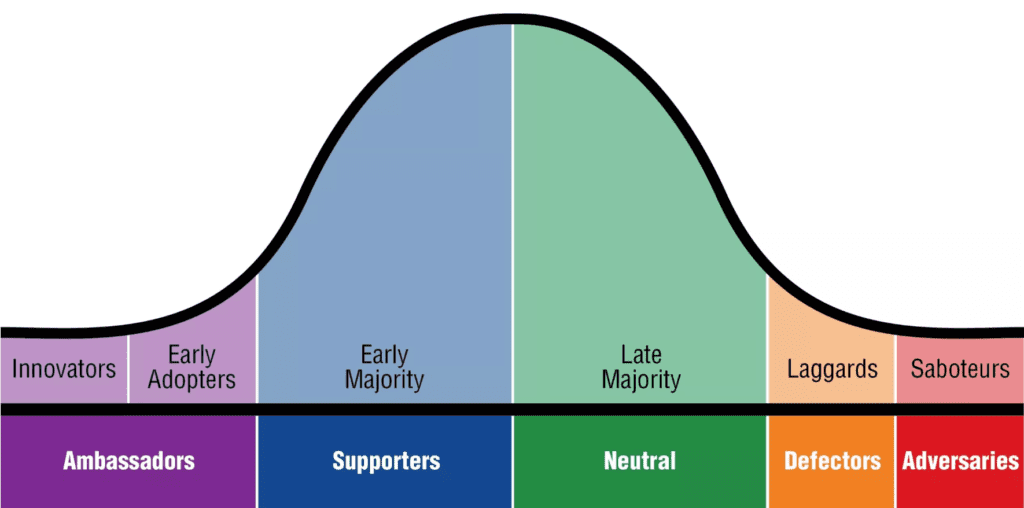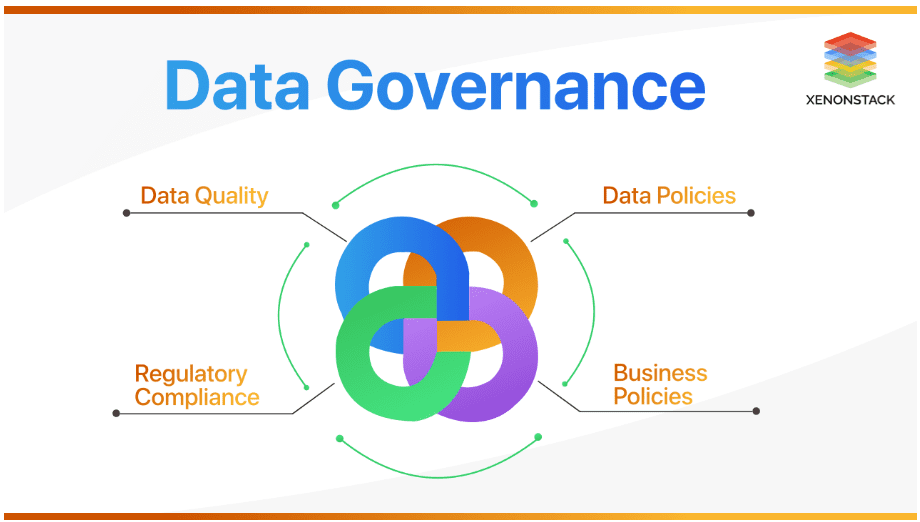
Seth Rao
CEO at FirstEigen
How to Create a Data-Driven Culture in Your Organization
Quality data enables businesses to make informed decisions, maximize profits, and implement data-driven technologies. The catch? Obtaining the data can be difficult, and monitoring it for quality without the right tools can be inefficient or even ineffective.
To maximize your data, you need a data-driven culture built on the right data quality tools.
In this guide, you will learn how to craft a data-driven vision for your organization, promote organizational buy-in, govern your data, and measure success with data-driven KPIs. You’ll learn why First Eigen’s DataBuck is a critical data quality tool.
Key Takeaways
- A data-driven culture in your organization can drastically impact your data quality and long-term success.
- Ensure that leaders and influencers within your organization buy into your cultural vision, because ambassadors exert a strong influence on your organizational culture.
- Data quality governance includes monitoring, validating, and securing your data.
Defining a Data-Driven Cultural Vision
Organizational culture is not the result of a single policy, technology, or personality. Instead, it’s the cumulative set of values, beliefs, attitudes, systems, and rules that influence behavior within your organization.
What Does It Mean to Have an Organizational Culture?
Every organization has a culture—some healthier than others. For modern businesses, part of a healthy organizational culture is a healthy posture toward data.
This attitude is partially intangible, such as how individual employees feel about data or how leadership prioritizes data quality discussions. But it also expresses itself in tangible ways, such as the tools a company invests in, the policies they create, and the types of employees they attract.
Your organizational culture has a profound impact on the success of your organization, so defining the right data-driven vision is important. Positive organizational culture contributes to the success of brands like Patagonia and Zappos, while an unhealthy one has harmed companies like Theranos and WeWork.
Components of a Data-Driven Vision
Briefly, here are a few things your data-driven organizational vision should include:
- Decision-making processes: In a data-driven organization, you should make decisions based on data. At the leadership level, you must know how to quantify success in terms of data. Your vision should answer questions like, “What data do I need to make this decision, and how can I obtain it?”
- Data as an asset: A data-driven organization views data as a competitive asset. They look for ways to leverage data for a competitive edge and protect their data.
- Data literacy and ongoing education: How can you promote data literacy within your organization? What types of ongoing data quality education can you provide?
- The right tools for the job. Identifying your technological needs is vital. Envision your organization’s desired data quality, identify current bottlenecks and roadblocks, and implement technology solutions like DataBuck to overcome those barriers.
Cultural Buy-In
Every employee contributes to your organization’s culture, so fostering a unified vision of a data-driven culture is difficult without cultural buy-in.
Buy-in reflects how willing individuals in your organization are to adopt and embody your vision. High buy-in can look like employees talking positively about data quality, showing a willingness to adapt their processes, and eagerly adopting new technologies.
Leadership Buy-In
There are five stages of buy-in: strongly supportive, mildly supportive, neutral, mildly resistant, and strongly resistant. The goal of leadership buy-in is to ensure influential individuals are strongly supportive, enabling them to positively influence others.
The people with the strongest opinions significantly impact your culture. So, it’s important that your early adopters and innovators include influential leaders and managers within your organization.
To increase leadership buy-in, engage in open dialogue. Simply asking questions and listening to opinions can be powerful. By discussing the pros and cons of the project with your teammates, you involve them in the project, and involved employees make excellent advocates.

Ongoing Training
Since technology is constantly changing, ongoing data quality education is crucial.
Strong opposition to new processes or technologies often stems from a lack of understanding. By educating your team about data quality, you not only prevent data quality errors and use the latest practices but also increase cultural buy-in.
Data Quality Governance
While companies consistently use more and more data, even the best companies only monitor 5% or less of it. The remaining majority is “dark,” meaning it’s unvalidated and unmonitored.
Corporate leviathans like Google, Amazon, and Netflix all have one thing in common: they gather large amounts of data and put it to good use. Their success is as much due to their data as to their products, but proper data governance makes that data useful and trustworthy.
Data governance is an important component of data quality because it’s how organizations secure, monitor, validate, and manage their data assets.
In a data-driven culture, your data quality governance should include:
- Data quality monitoring: This checks the accuracy and consistency of your data, essential for knowing how reliable your analytics are.
- Data security: Your data offers a competitive advantage, making it alluring to competitors and malicious third parties.
- Compliance monitoring. Depending on your industry and location, you may be subject to regulations like HIPAA, CCPA, and GDPR. Monitoring compliance helps you identify errors before you become noncompliant.
Data governance encompasses the policies, procedures, and tools you use to govern your data. Software like DataBuck from First Eigen helps companies govern their data quality.

Measure Success and Track Progress with Data-Driven KPIs
Data-driven KPIs (key performance indicators) define how you measure success and track progress. Without KPIs, your goalpost for success and failure can change. Essentially, KPIs help companies stay on track.
Consider these data-driven KPIs:
- Customer lifetime value (CLV). The average value gained from each customer over their lifetime.
- Return on investment (ROI). The hometown hero of KPIs, ROI measures the profitability of marketing campaigns and evaluates pricing strategies.
- Inventory turnover. This measures how quickly your organization sells and replenishes inventory.
- Employee turnover rate. What percentage of employees leave within a period of time? This can indicate changes in employee retention and satisfaction and overall morale.
Building a Data-Driven Culture
Any good journey requires a clear destination and a planned route. Even though the route may change and evolve throughout your journey, knowing the milestones helps guide your planning and execution. Here are practical steps for building a data-driven culture:
Invest in Data Quality Tools
Tools like First Eigen’s DataBuck can help you validate your data. Since so much of your culture depends on the reliability and availability of your data, investing in the right data tools is an immutable part of building your data-driven culture.
Encourage Data Collection
Rather than simply asking your teammates to collect data, consider ways you can make that data actionable for them. For example, they could periodically prepare reports on their data collection and use data in decision-making.
Strengthen Your Data Governance
One of the best practical steps to strengthen your data governance (and thereby improve your data quality) is to simply document clear policies and procedures around data in your organization. Have a standard for how data is to be collected, managed, stored, and used.
Use KPIs to Track Your Progress
KPIs remove guesswork from your management process. Use KPIs to set tangible, measurable goals, and then use them to track your progress.
Share Your Wins
Quality data has the power to revolutionize your business. Communicate your victories, celebrate as a team, and show how your data-driven culture led to those successes. This reinforces the value of your data-driven culture.
Next Steps in Data Quality
The end goal of a data-driven culture is high-quality data, enabling your organization to make high-quality decisions. Without quality data, you can’t accurately measure KPIs, meaningfully evaluate your pricing strategies, or optimize marketing dollars.
In other words, your organization’s success depends on your data quality.
First Eigen uses cutting-edge AI and machine learning tools to monitor and verify your data, maximizing this valuable asset.
See how First Eigen’s revolutionary DataBuck technology can improve your data quality and eliminate roadblocks to your data-driven culture. Get a free trial of DataBuck today.
Discover How Fortune 500 Companies Use DataBuck to Cut Data Validation Costs by 50%
Recent Posts
Get Started!



